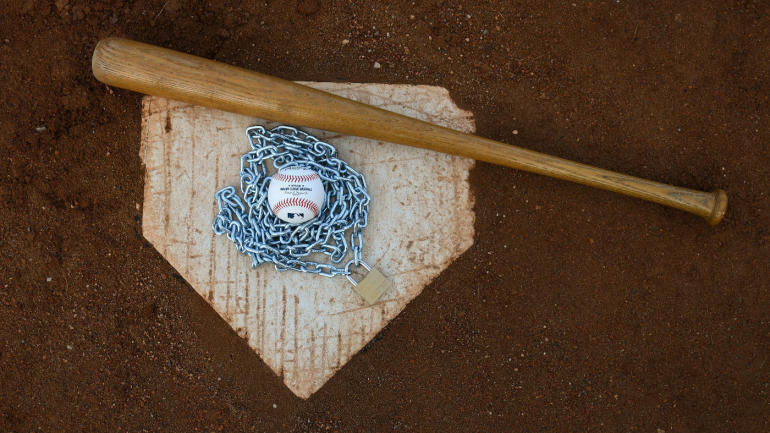
For the first time since the owners' lockout started on Dec. 2, MLB and the MLB Players Association held bargaining sessions on back-to-back days this week. The two sides met for roughly two hours on Monday, during which the union countered the proposal MLB submitted two weeks ago. Most notably, the MLBPA is no longer seeking to tie free agency to player age.
MLB made a counterproposal of its own Tuesday, though it was not as comprehensive as their initial proposal two weeks ago. It is unknown when the two sides will hold their next bargaining session. Here are the known details of the proposal MLB submitted during Tuesday's hour-long meeting:
- Agreed to the union's proposal of a bonus pool for players in their pre-arbitration years. Bonuses would be awarded to players who finish in the top 30 in WAR. The MLBPA is seeking a $105 million pool while MLB countered with $10 million, so they remain far apart on the actual dollars. (via ESPN's Jeff Passan)
- Raise the minimum salary to $615,000 for players with 0-1 years of service time. The league previously offered $600,000. The minimum salary was $570,500 in 2021 and the MLBPA is seeking $775,000. MLB did not change its proposal for a set $650,000 salary for players with 1-2 years of service time and $700,000 for players with 2-3 years of service time. (via The Athletic's Evan Drellich)
- MLB dropped its proposed changes to the arbitration system. The owners previously proposed replaced arbitration with a pay-for-play system. (via Chelsea Janes of the Washington Post)
While meeting on back-to-back days for the first time qualifies as progress, it is only relative progress. MLB and the MLBPA are still said to be very far apart on several key issues, including changes to the league's revenue sharing plan.
Long story short, the MLBPA wants to put more money into the pockets of players who are early in the careers. Those players make close to the league minimum and make up an increasingly larger portion of the player pool. At minimum, MLB does not want to give up any of the gains they made in the last few collective bargaining agreements, and ideally would like to gain even more.
Core economic matters are the only matters that truly matter this time around. The collective bargaining agreement also covers things like rule changes, but baseball is a $10 billion a year business, and how that $10 billion is distributed is at the heart of the lockout. The lockout will end when the two sides figure out the money and not a second sooner.
At Monday's meeting MLB deputy commissioner Dan Halem reportedly informed the players the league is willing to sacrifice regular season games over key issues. That is not so much a threat as it is an acknowledgement of the reality of the situation. The lockout would have no teeth if the owners weren't willing to lose games (and, by extension, fans).
Pitchers and scheduled are scheduled to report in roughly three weeks. For spring training to start on time, the two sides would need to reach an agreement within a week or so. March 1 is the approximate date they would need to reach a deal to begin the regular season on time.


















